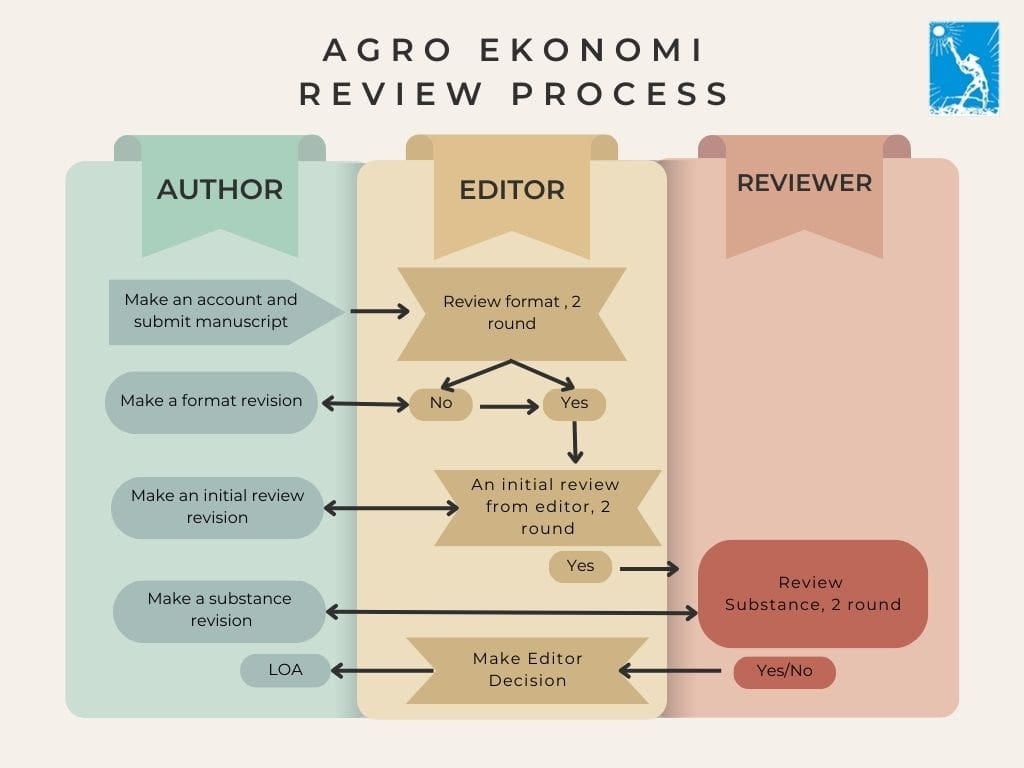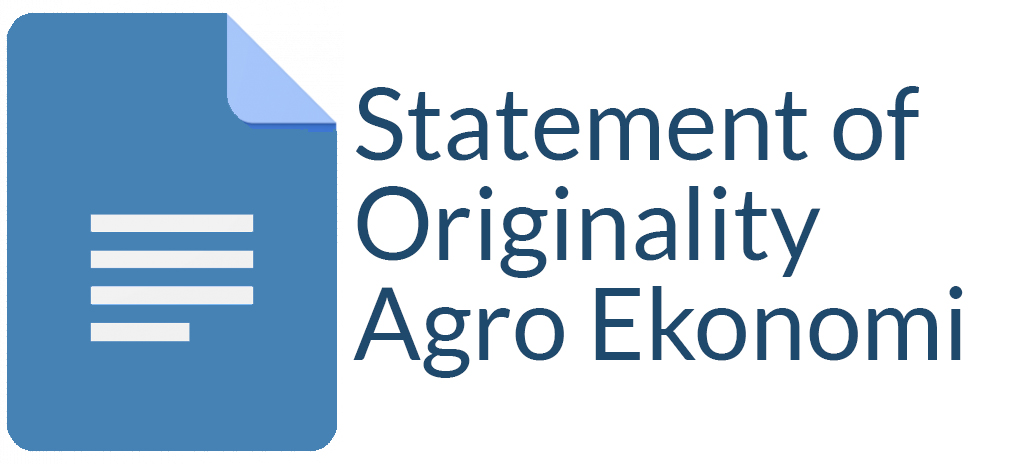Competitiveness and Export Similarity of Indonesian Horticulture in The Asean-Asean+3
Nur Chasanah(1*), Jangkung Handoyo Mulyo(2), Dwidjono Hadi Darwanto(3)
(1) Student of Graduate Program, Department of Agriculture Socio Economic
(2) Population and Policy Studies Center (PSKK), Universitas Gadjah Mada
(3) Professor Department of Agriculture Socio Economic, Faculty of Agriculture, Universitas Gadjah Mada
(*) Corresponding Author
Abstract
In the framework of ASEAN+3 integration, Indonesian horticultural trade is facing a dilemmatic position. Being in the middle of a fi erce competition with benchmark countries, it is important that Indonesia gain the highest profi t from its integration strategy. Evaluation is n of needed to investigate Indonesian’s position in ASEAN +3 horticultural markets and the sustainability of specifi c trading prospect on each member country. Therefore, this study aims to investigate competitiveness and similarity of Indonesian horticultural export structure in intra-ASEAN+3. Revealed Comparative Advantage (RCA) analysis shows that Indonesian horticulture does not have aggregate competitiveness in ASEAN+3 market. The average of Indonesian RCA decreased from 1,64 in ASEAN level during 1999-2014 to 0,45 in ASEAN+3 level. In addition, based on Export Similarity Index (ESI) analysis, Indonesia has the highest and the most consistent similarity of horticultural export structure with Singapore, both in ASEAN and ASEAN+3 level. Meanwhile, Thailand has the highest level of export structure similarity in ASEAN with ESI index of 93,77. Integration of ASEAN+3 has led to an alteration in trading scheme in which ESI with each member country generally decrease. The highest level of export structure similarity occurs with Singapore with ESI index of 85,95. Overall, the trade of horticultural commodity in the framework of ASEAN+3 integration is dominated by export structure similarity which may lead to a competition between the members of ASEAN+3.
Keywords
Full Text:
PDFReferences
Abu, H.R.A., Shoumann, N.A., and Xuexi, H. 2012. Exploring Egypt trade: dynamics and prospects. Journal of Economic Studies 39(3): 314-326.
Arifin, B. 2013. On the competitiveness and sustainability of the Indonesian agricultural export commodities. ASEAN Journal of Economics, Management and Accounting 1(1): 81-100.
Balassa, B. 1965. Trade liberalization and revealed comparative advantage. The Manchester School of Economics and Social Studies 33(2): 9-123.
Bojnec, S., and Ferto, I. 2012.Complementarities of trade advantage and trade competitiveness measures. Applied Economics 44: 399-408.
Eastpring Investments Indonesia. 2016. Kehadiran sang penantang. http://eastspring.co.id.[31 Desember 2016].
Erwidodo. 2014. Memperkuat daya saing produk hortikultura: strategi menghadapi MEA 2015. Badan Penelitian dan Pengembangan Pertanian. Jakarta Selatan.
Finger J.M. and Kreinin, M.E. 1979. A measure of export similarity and its possible uses. Economic Journal 89: 905-912.
Fundira, T. 2013. An analysis of Africa’s export performance and export similarity for select countries within the Tripartite Free Trade Area market. Trade Law Center Trade Brief S13TB 03(10): 1-23.
Gul, A. 2014.Analyzing Pakistan’s trade opportunity with Turkey. The Lahore Journal of Economics 19: 349-370.
Hermawan, I. 2016. Daya saing rempah Indonesia di pasar ASEAN periode pra dan pasca krisis ekonomi global. Buletin Ilmiah Litbang Perdagangan 8(2): 153-178.
Krugman, P. 1991. The Move Toward Free Trade Zones, in Policy Implications of Trade and Currency Zones. Kansas City, Wyoming, Federal Reserve Bank of Kansas City.
Kwan, Y.K., and Qiu, L.D. 2010.The ASEAN+3 trading bloc. Journal of Economic Integration 25(1): 1-31.
Lapipi. 2005. Analisis Efek Integrasi Ekonomi Asean dan Manfaatnya Bagi Perdagangan Negara-Negara ASEAN. Universitas Indonesia, Depok.
Nasrudin, Sinaga, B.M., Firdaus, M., and Walujadi, D. 2014.China-ASEAN free trade: complementarity or competition. IOSR Journal of Economics and Finance (IOSR-JEF) 3(4): 23-31.
Peters, E.D. 2008. The impact of China’s global economic expansion on Latin America. World Economy & Finance Research Programme, 4: 1-55.
Perez, A.P., and Wilson, J.S. 2012. Export performance and trade facilitation reform: hard and soft infrastructure. Journal of World Development 40(7): 1295-1307.
Pusat Sosial Ekonomi dan Kebijakan Pertanian. 2012. Cuplikan Peraturan Menteri Pertanian No: 60/PERMENTAN/OT.140/9/2012Tentang Rekomendasi Impor Produk Hortikultura. Analisis Kebijakan Pertanian 10(3): 289-297.
Sari, P.S., dan Hartono, S. 2010.Analisis dinamika ekspor minyak nilam Indonesia ke Amerika Serikat. Jurnal Agro Ekonomi 17(1): 19-28.
Sinaga, L.C. 2010. Indonesia di tengah kesepakatan ACFTA. Jurnal Penelitian Politik 7(2): 1-13.
Sudsawasd, S. 2012. Trade integration in East Asia: an empirical assessment. Modern Economy 3: 319-329.
Wang, L. 2015. An analysis of trade structure, comparative advantage and complementarity of agricultural products between China and Main East Asian countries. Asian Agricultural Research 7(15): 14-20.
Yao, A., and Wan, L. 2014. Competitiveness of China’s agricultural product export to the United States of America. Asian Agricultural Research 6(12): 9-13.
Article Metrics
Refbacks
- There are currently no refbacks.
Copyright (c) 2017 Agro Ekonomi

This work is licensed under a Creative Commons Attribution-ShareAlike 4.0 International License.
View My Stats











